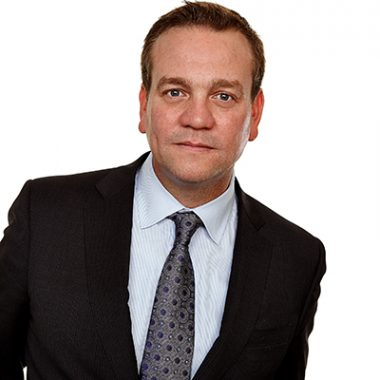Increasing assets under management (AUM) is a common goal for growth-focused advisors. You may know, however, that building a book of business is sometimes easier said than done. Niching down to focus on clients in a particular asset range is one way to counter the challenges of growing in a competitive market. Here’s how to get more clients and help boost your AUM.
SmartAsset’s Advisor Marketing Platform (AMP) offers financial advisors services like client lead generation, automated marketing and more. Learn about SmartAsset AMP today.
How to Target Specific Client Asset Amounts as a Financial Advisor
Gaining more clients in your target AUM range requires strategic planning. Your branding, marketing and connections can all influence your results. Here are some of the most effective ways to attract the clients you most want to serve.
1. Choose an Asset Range
How much wealth do you expect prospective clients to bring to the table? That’s the first question to consider, as the answer shapes your approach to both marketing and outreach.
Clients may be classified as:
- Mass affluent: Less than $1 million in assets and $100,000+ in annual income
- High net worth (HNW): More than $1 million, but less than $30 million in assets
- Ultra-high net worth (UHNW): More than $30 million in assets
A client’s needs, goals, risk tolerance and perspective on money typically evolve as they acquire more wealth. Their expectations for their financial advisor can also be quite different.
A mass affluent client, for example, may be focused primarily on developing a retirement plan or saving for their children’s college education. Someone who’s ultra-high net worth, on the other hand, may be more focused on creating a legacy of wealth or a legacy of giving.
There’s no right or wrong answer to which asset range you want to target. Your sweet spot for asset amounts should reflect the ideal client that you’re best equipped to serve with your knowledge and expertise.
2. Refine Your Branding
Effective branding can be helpful for advisors who want to stand out in a competitive landscape, particularly if they’re targeting high-net-worth or ultra-high-net-worth clients.
Branding is everything that represents the “face” of your business. It’s the color scheme and fonts you use on your website, your firm’s logo, your tagline and your brand statement.
Look at each of these elements individually and as a whole, and ask yourself:
- What message does your branding convey?
- Who is your branding meant to appeal to?
- Does your brand image convey the qualities or characteristics your ideal clients value most?
- Is your branding memorable and does it trigger a positive association with prospects?
Your brand should neatly encapsulate who you are and what your business stands for, and it needs to be relatable to the clients you want to attract.
Look at your top three to five competitors and consider what makes their branding stand out. It’s likely a combination of things rather than just one thing, but this type of research can give you a better understanding of what your ideal clients are most likely to respond to.
3. Automate Lead Generation
Automation can be a game-changer for advisors looking to scale their prospecting efforts. SmartAsset AMP is a marketing and lead generation platform designed specifically for RIAs and financial advisors. It connects advisors with high-intent investors and offers real-time phone introductions, making it easier to establish contact quickly and effectively.
One of the key advantages of SmartAsset AMP is the ability to customize lead preferences. Advisors can opt to receive leads with a minimum level of investable assets, such as $1 million or more, and choose how many leads they want each month.
For instance, T.J. Tamura, a financial advisor at Capitol Planning Group, receives “around 30 to 50 leads per month, on average.”
“I’m usually looking to close about one to two clients per month,” says Tamura. “And right now it’s much closer to two, getting closer to three, because I am generating a significantly higher quantity of leads.”
By combining targeted outreach with automation, SmartAsset AMP helps advisors increase their efficiency, broaden their reach and accelerate client acquisition. Sign up for a free demo today.
4. Network, Network, Network

Your network is a significant source of referrals for new clients. Building centers of influence is a way to leverage your referral network strategically to find clients in your ideal asset range.
Centers of influence (COI) are networks of professionals that exchange referrals with one another. The types of individuals you want in your COI will depend on the clients you want to work with. Generally, you’re looking for attorneys, CPAs, insurance agents, mortgage specialists — people who are in fields adjacent to financial planning.
Building centers of influence means spending time in spaces where you’re likely to encounter those types of professionals. Here’s where you may find them:
- Financial conferences, seminars and workshops
- Community business events
- Local charitable events
- Your city’s chamber of commerce
- Local business associations
You can also look to social media and online collaborations to grow your network. LinkedIn, for example, functions as both a networking and marketing tool for financial advisors.
5. Show Your Value
Show, don’t tell, is a cardinal rule in writing, and it can serve you well when you’re trying to attract clients with specific asset amounts, too. It’s not enough to deliver a sales pitch; prospective clients may need more tangible proof of what you can do for them before they’re willing to commit.
How can you deliver that? Here are three common ideas.
- Offer one or more high-value lead magnets that speak to a pain point your ideal client is struggling with.
- Develop a seminar or workshop that explores a topic your prospective clients care about in more detail.
- Create website and social media content that emphasizes your expertise and understanding of what your ideal clients need help with most.
You don’t want to give everything away, but you do want to pique a prospective client’s interest enough so that they’re prompted to reach out.
6. Develop a New Offering
Expanding your client base sometimes requires you to rethink the services you offer. If you’re leaning into the high net worth market, for instance, there may be gaps in your current suite of services that you’ll need to fill to meet the needs of wealthier clients.
Developing a buyer persona can help you determine which services could prove most beneficial to the clients you’re trying to reel in. A buyer persona is a hypothetical profile that represents your ideal client.
Whether you’re hoping to acquire clients with $500,000, $5 million or $50 million in assets, you need to put yourself in their shoes.
- What are their primary financial concerns?
- What do they want to happen to their assets after they’re gone?
- Who depends on them financially?
- How do they approach risk?
- How knowledgeable are they about the markets?
- What are they not getting from their current advisors that you could provide?
Asking these kinds of questions can help you define what kind of service offerings are most likely to resonate with them.

Client Acquisition Simplified: For RIAs
- Ideal for RIAs looking to scale.
- Validated referrals to help build your pipeline efficiently.
- Save time + optimize your close rate with high-touch, pre-built campaigns.

CFP®, CEO
Joe Anderson
Pure Financial Advisors
We have seen a remarkable return on investment and comparatively low client acquisition costs even as we’ve multiplied our spend over the years.
Pure Financial Advisors reports $1B in new AUM from SmartAsset investor referrals.
Bottom Line

Advisors can segment their client lists in different ways, and focusing on assets is only one option. These strategies can help you develop a marketing approach that allows you to make the biggest impact with the prospects you want to reach the most.
Find & Close Ideal Clients
Get regular introductions to retirees, pre-retirees, and high network prospects to grow your business.

Tips for Growing Your Advisory Business
- A comprehensive marketing plan is priceless and a solid digital footprint is a key element. Social media, email and search engine optimization (SEO) can all bring more prospects your way. If you’re looking for another digital solution, you might consider an advisor marketing platform. SmartAsset AMP (Advisor Marketing Platform) is a holistic marketing service that financial advisors can use for client lead generation and automated marketing. Sign up for a free demo to explore how SmartAsset AMP can help you expand your practice’s marketing operation. Get started today.
- Consider whether obtaining additional credentials or certifications could be a worthwhile investment for attracting new clients. A Certified Financial Planner™ (CFP®) or chartered financial analyst (CFA) credential, for example, can enhance your credibility in a prospect’s eyes. Weigh the investment of time and money required to obtain professional credentials and the possible return on that investment to decide if it makes sense for you.
Photo credit: ©iStock.com/fizkes, ©iStock.com/m-gucci, ©iStock.com/PeopleImages
